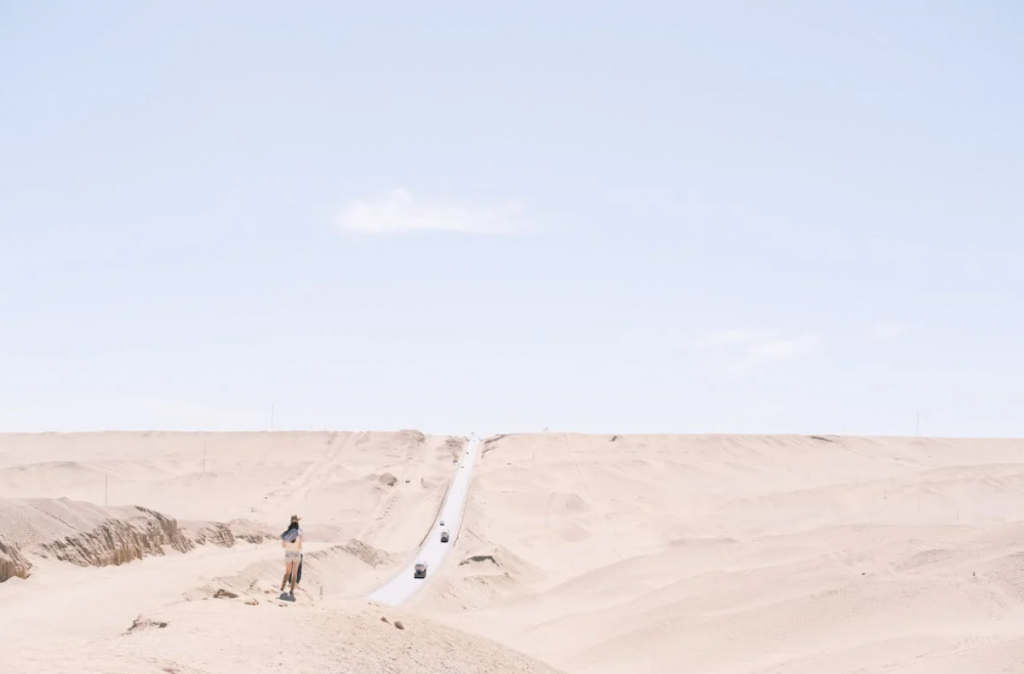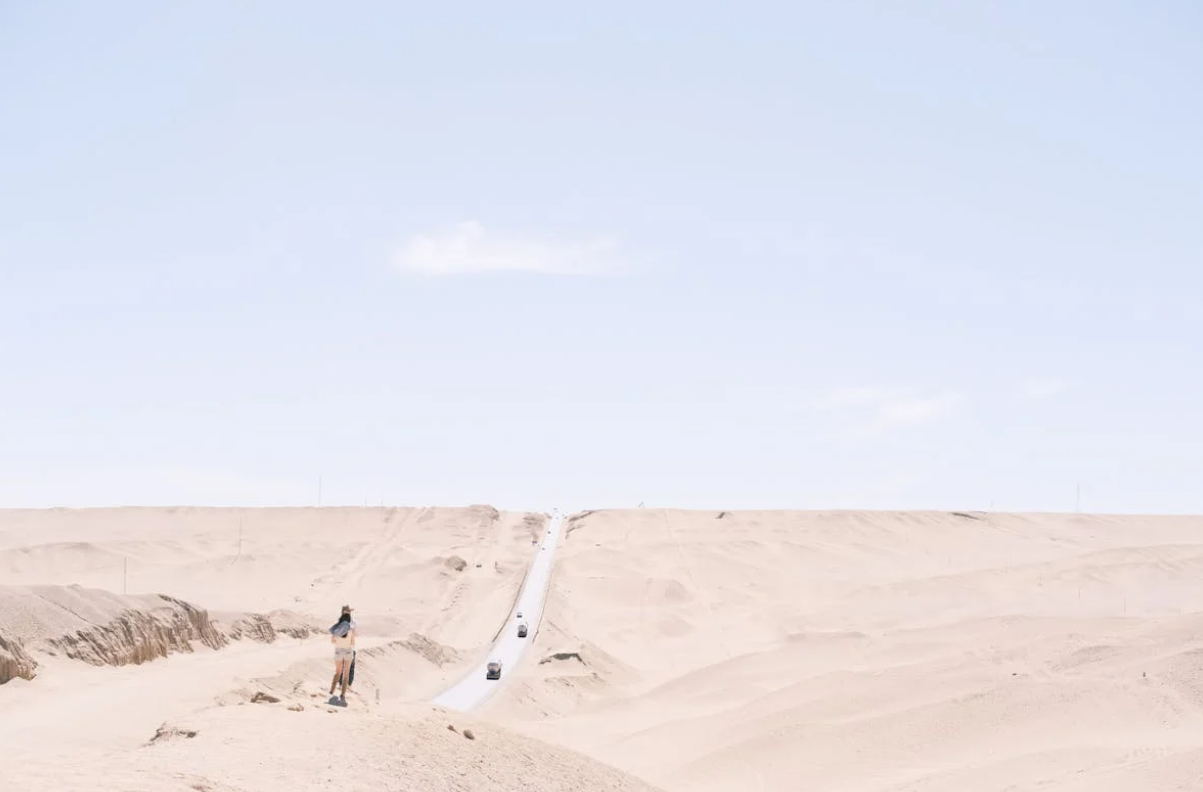Introduction to the Sahara Desert
The Sahara Desert is not just a vast stretch of sand and arid dunes; it’s an experience that offers visitors a unique glimpse into the untouched beauty of nature. When we think of deserts, the Sahara, with its towering dunes and relentless sun, often comes to mind. However, Morocco’s Sahara is a world of its own—breathtaking in its vastness, rich in history, and deeply connected to the people who have made this land their home for centuries.

Why Morocco’s Sahara is Special
Morocco’s Sahara Desert is unlike any other desert in the world. The charm lies not only in the landscape but also in the deep cultural and historical significance that it holds. Stretching across much of southern Morocco, it’s home to stunning dunes, the starry sky, ancient Berber villages, and an intricate history shaped by trade routes. The Sahara’s landscape, with its rolling sand dunes and isolated oases, offers a sense of peace and wonder.
The Geography of Morocco’s Sahara
The Sahara Desert in Morocco spans over 50,000 square kilometers, making it one of the largest and most influential deserts on the planet. With regions like the Merzouga dunes and the Erg Chebbi dunes, it’s easy to see why the Sahara is often regarded as one of the most beautiful places in Morocco. The dunes here can rise up to 150 meters high, creating an otherworldly vista of orange sands that stretch out as far as the eye can see.
Climate and Weather Patterns
The climate of the Sahara is extreme, with scorching temperatures during the day and chilly nights. The weather is harsh but the desert’s beauty remains timeless. Visitors are often surprised by the drastic temperature changes, especially during the summer months. A day in the desert might have temperatures exceeding 40°C (104°F), while nighttime temperatures can drop drastically, sometimes reaching near freezing conditions.
Popular Sahara Desert Activities
Morocco’s Sahara Desert offers a range of activities that will leave adventurers awe-struck and immersed in the desert’s mystique. From camel trekking to camping under the stars, there’s no shortage of ways to experience the unique charm of the desert.
Camel Trekking
Camel trekking is the most iconic way to explore the Sahara. Riding on the “ships of the desert” takes you through the sand dunes in a way that feels almost like a step back in time. The rhythmic motion of the camel, coupled with the sweeping beauty of the desert, makes this experience unforgettable. It’s not just about the ride; it’s about immersing yourself in the timeless tradition of desert travel.
Camping Under the Stars
There’s nothing quite like camping in the Sahara Desert. Away from the light pollution of the city, the night sky here is utterly magical. Under a blanket of stars, the desert becomes alive with beauty, and the tranquility of the surroundings can make you feel like the only person in the world. Whether in traditional Berber tents or luxury desert camps, the experience of sleeping under the stars is one you’ll remember forever.
Sandboarding and Dune Adventures
For thrill-seekers, sandboarding in the Sahara is an exhilarating way to conquer the dunes. Whether you’re an expert or a beginner, the sheer size of the dunes offers an experience like no other. Racing down the giant sand hills provides an adrenaline rush that complements the serenity of the surroundings.
The Culture and History of the Sahara
Morocco’s Sahara is steeped in culture and history. It has been the crossroads of civilizations for centuries, shaped by various groups, including the Berber people. Exploring the history of the Sahara can deepen your understanding of the region’s significance.
Berber Culture
The Berber people, indigenous to North Africa, have lived in the Sahara for thousands of years. Their nomadic way of life and their deep connection with the desert have shaped their culture in profound ways. From their language to their traditional architecture, Berber culture is an integral part of the Sahara’s identity. Visitors can immerse themselves in Berber hospitality by staying in traditional tents and learning about their lifestyle.
Ancient Trading Routes
Morocco’s Sahara was once a vital part of ancient trading routes that connected Africa to Europe and Asia. The famous Silk Road passed through this region, bringing wealth, culture, and knowledge. These ancient routes were crucial for the exchange of goods such as spices, textiles, and gold.
The Silk Road and Beyond
The Sahara Desert was more than just a natural barrier; it was a route for trade and cultural exchange. The desert was central to the movement of goods and ideas, with caravans crossing the vast expanse carrying everything from silk to precious metals. The cultural influence of these exchanges is still visible in the art, architecture, and traditions of the people who call this desert home.
Best Time to Visit Morocco’s Sahara
The best time to visit the Sahara Desert is during the cooler months of the year, typically from October to April. The summer months can be overwhelmingly hot, making the desert almost unbearable. By planning your trip during the fall or spring, you’ll be able to experience the desert’s beauty without battling the extreme heat.
Seasonal Variations in the Sahara
The Sahara Desert has distinct seasonal changes. During the winter months, the desert experiences chilly nights and pleasant days, while in the summer, temperatures can soar. The best time to visit depends on what type of experience you’re looking for. The cooler months are ideal for camel treks and stargazing, while the warmer months are perfect for exploring oases.
Avoiding the Extreme Heat
To avoid the intense heat of summer, it’s essential to plan your visit wisely. Early mornings and late afternoons are the best times to explore the desert, when temperatures are more bearable. Most tours are designed around these cooler hours to ensure comfort and safety.
Morocco’s Sahara in Popular Culture
The Sahara Desert has captured the imagination of writers, filmmakers, and artists for centuries. Its vast, mysterious landscape has served as the backdrop for countless films and stories.
Sahara in Movies and Literature
From “Lawrence of Arabia” to “The English Patient,” the Sahara has featured prominently in cinematic history. Its portrayal in film and literature often highlights the desert’s isolation and beauty, while also exploring themes of survival, adventure, and transformation.
How to Prepare for a Sahara Adventure
Preparing for a desert adventure requires thoughtful planning. While the experience of the Sahara is unforgettable, it’s important to be equipped and knowledgeable about what to expect.
Essential Gear and Packing Tips
When heading into the Sahara, packing smartly is key. Lightweight, breathable clothing, sunscreen, and a good pair of hiking boots are essential. It’s also important to bring a hat, sunglasses, and plenty of water to stay hydrated. A good camera is a must to capture the desert’s natural beauty.
Choosing the Right Tour Operator
A reliable tour operator can make all the difference in your Sahara experience. Choose one with a proven track record for safety and comfort. Many tours provide guides who are local to the area and can offer unique insights into the desert’s history and culture.
Conclusion
Morocco’s Sahara Desert is an adventurer’s paradise, offering everything from tranquil desert landscapes to thrilling activities and a rich cultural history. Whether you’re camel trekking, camping under the stars, or exploring ancient trading routes, the Sahara has something for everyone. By planning your visit carefully and respecting the environment, you can ensure that your desert adventure will be an unforgettable experience.

No responses yet